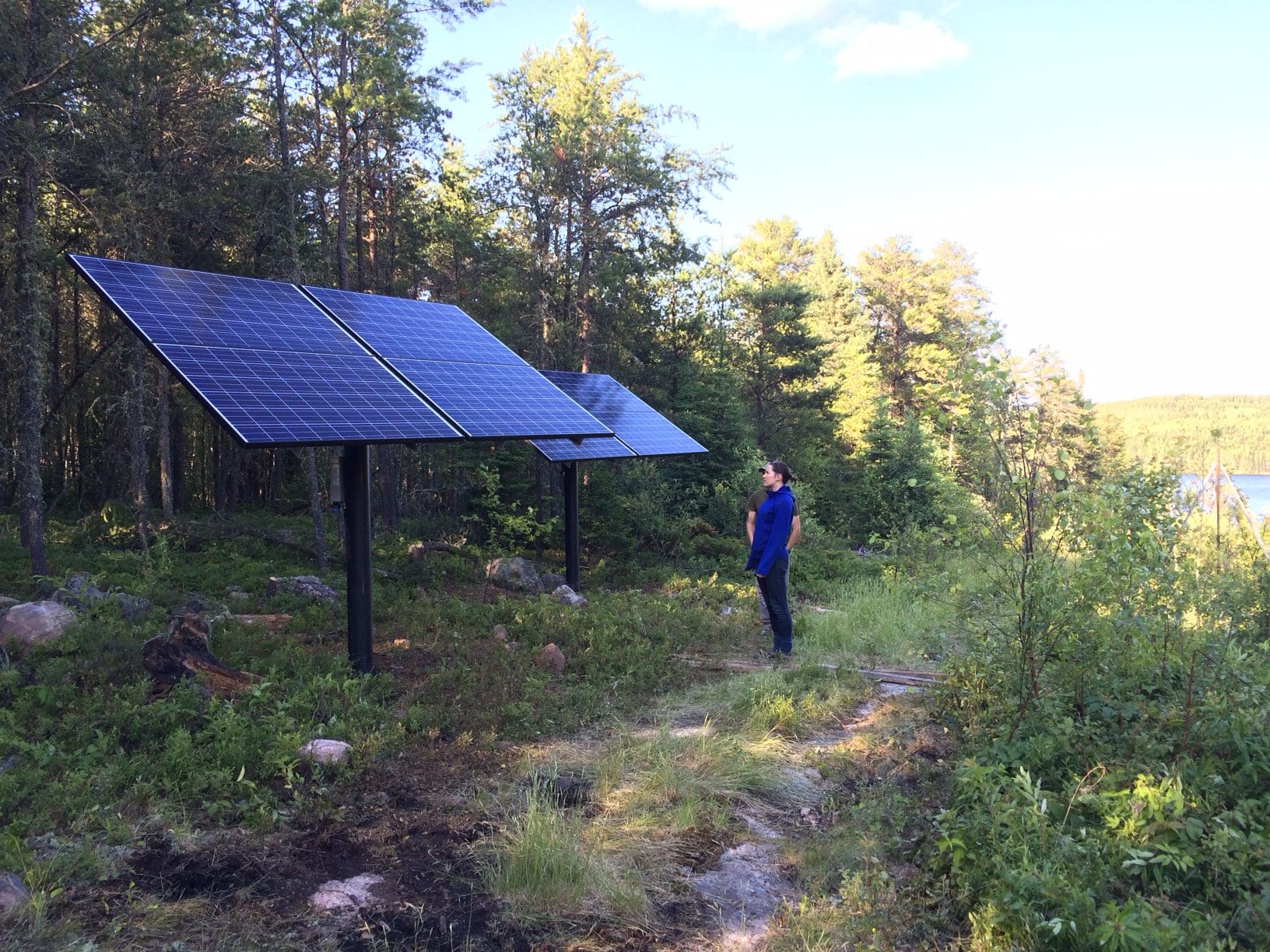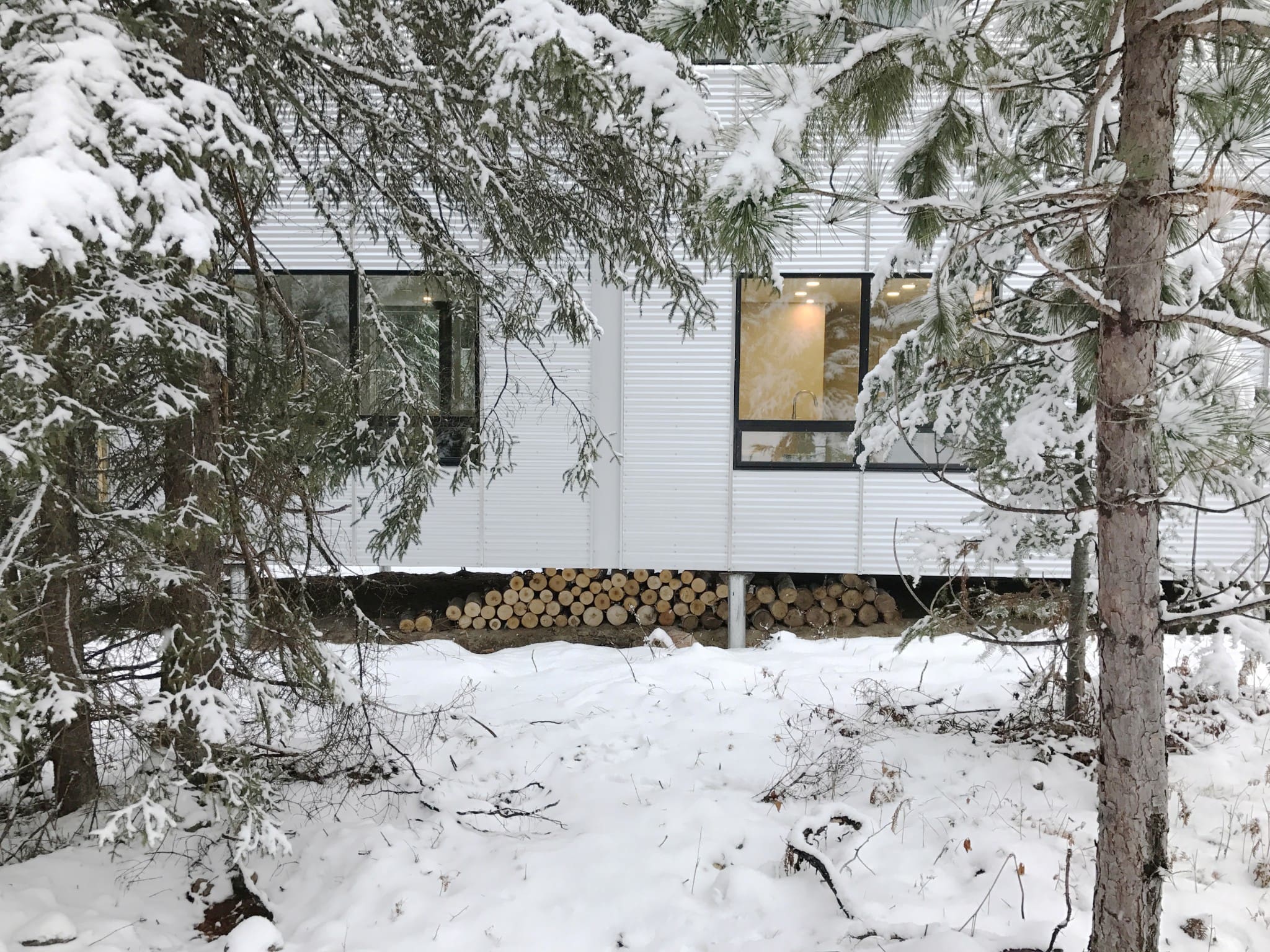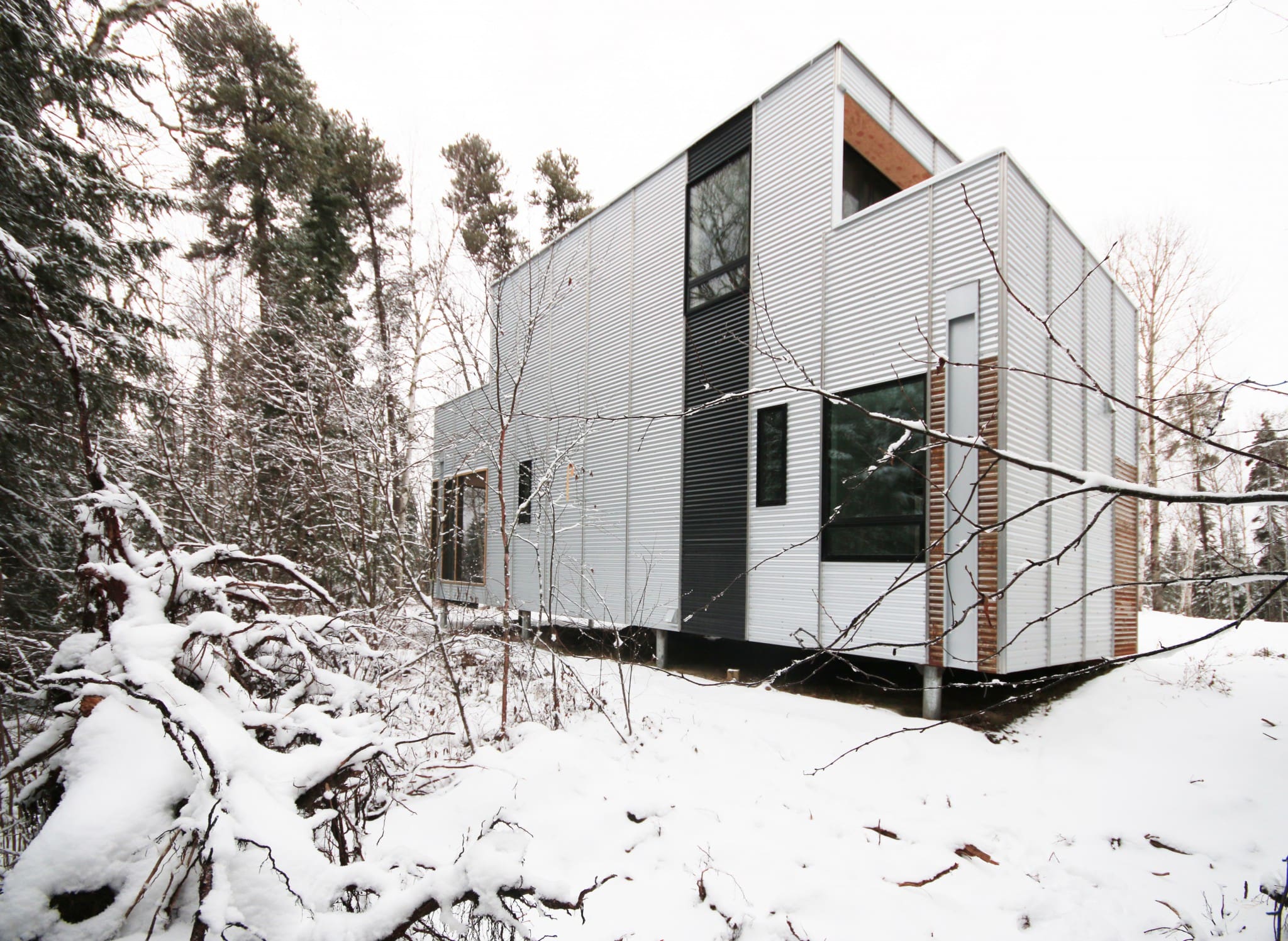As you can imagine, a world-renowned research facility that is used throughout the year by enthusiastic and dedicated researchers tends to keep an Operations team pretty busy.
Even while we are keeping the facility running, one of our overarching goals is to be continually improving on IISD Experimental Lakes Area’s (IISD-ELA) operational efficiency. Now that the International Institute for Sustainable Development operates the site, there is an even stronger organizational will to create a more sustainable facility.
IISD-ELA is essentially a small remote community, and like many remote off-grid communities we have relied on traditional diesel generators to supply our electricity. It is time for change, and we are focusing on reducing our carbon footprint by exploring and implementing alternative energy solutions.
Recently installed photovoltaic panels at IISD-ELA

New Beginnings
Focused on this goal, when it came time to replace two cabins, we engaged the help of Herbert Enns of OS 1 Architecture, Conquest Manufacturers, and Raysolar. By keeping green building concepts in mind (such as design, construction, operation, and maintenance) we now have two new residences that are completely powered by off-grid solar energy!
The design process focused on taking advantage of renewable resources right from the start. Energy conservation techniques included: using sunlight through passive and active solar; high-efficiency windows, boilers and appliances; LED lighting; smart thermostats and automatic light switches; and, of course, good insulation.
We were only able to begin this process of making IISD-ELA more sustainable thanks to two extremely generous donors to whom we owe the greatest thanks.
A newly constructed energy efficient cabin at IISD-ELA

Tools of the Trade
As we continue to look at greater energy efficiency at IISD-ELA, we are taking a closer look at our day-to-day energy use and opportunities to conserve energy.
We have started to switch the facility’s light sources over to high-efficiency low-voltage LED lighting thanks to a generous contribution from the Richardson Foundation. We hope to have all lights converted over and smart switches installed by 2017/18.
ATVs and UTVs are a means of transport that our researchers and facility maintenance personnel rely on heavily. Through a partnership with Polaris Industries we are able to test the Ranger Li-ion electric vehicle, the latest in Polaris’s EV line. A combination of good performance and zero emissions could make this a go-to vehicle for us. Incorporating solar charging stations for these EV vehicles would make them 100 per cent renewably powered.
In early 2016 our winter sampling research team set out on the ice-covered lakes with a newly acquired Li-ion battery operated ice auger. The delighted grins on their faces were enough to confirm that the testing had been a success. In addition to eliminating the possibility of sample contamination by petroleum by-products, the unit was lightweight, low-noise, exhaust-free, and there was no messing with pull-start cords, chokes or warm-up periods. Needless to say, we had added another electric ice auger to our winter sampling toolbox for 2017.
IISD-ELA Operations Manager Mark Lyng putting the Ranger Li-ion EV to the test

What’s Next?
Here at IISD-ELA we will continue to pursue renewable energy production options, hopefully identifying a solution and a funding source to help us minimize, or ideally eliminate, our dependence on diesel.
One option would be to install a diesel-solar micro grid system. A system such as this would incorporate a photovoltaic (PV) power grid and energy storage component to allow the diesel generators to operate at their point of maximum efficiency and to be shut down whenever possible. Incorporating the latest methods of energy storage make it possible to maximize the contribution of renewables, increasing the penetration and harvesting of all the PV power.
For the IISD-ELA facility, a reduction in generator run time of 50 per cent is potentially achievable and would provide significant savings in diesel consumption, carbon dioxide emissions and noise pollution.
